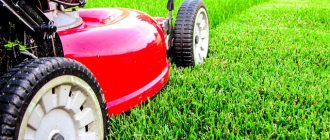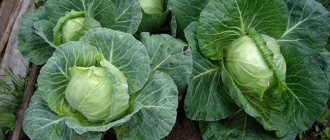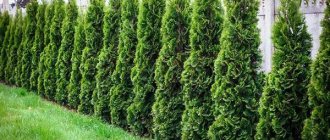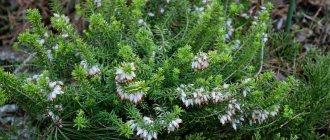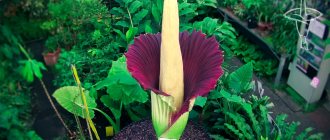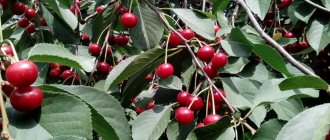A significant portion of lawn maintenance work occurs in the spring. It is necessary to bring the grass cover into proper shape after wintering, treat it, repair it and do much more. How the lawn is cared for in the spring is the topic of further discussion.
Rolling
Spring work on the lawn begins when it dries out after the snow melts and becomes hard enough. If you start earlier, your feet will sink into the soggy soil and the lawn will be disfigured by potholes.
If there is a snowdrift left in any place on the site, it should be scattered over the area, trying to trample as little as possible (alternatively, place a wooden shield under your feet).
This will prevent stagnation of water in this place (fraught with the development of fungal diseases in plants) and speed up the melting process. It is useful to start by rolling the area with a garden roller. During the cold period, the ground moisture lying under the turf could undermine it due to repeated freezing-thawing cycles, breaking the connection with the base.
Pressing with a roller eliminates this defect, restoring a tight fit of the roots to the fertile soil. This operation is not always necessary. They do not resort to it if the lawn is already several years old and has managed to take root firmly, the drainage on the site is organized according to all the rules, and there have been few thaws in winter.
Useful tips for solving spring problems
From time to time, it happens that on top of the surface of a fresh lawn there appear places with noticeably thinning grass, called bald spots by gardeners. If they are small in size, the optimal solution would be to replace the damaged areas with new fragments of turf. They can be taken from any other places, for example, from the edge of your lawn or from an area under bushes. If these bald spots are too large, add more grass in these places. To do this, first loosen the soil with a pitchfork, then level the surface (add sand if necessary), and finally sow the seeds.
Bald spots on the lawn need to be dealt with
When the weather is humid outside, you can sometimes notice a white substance that sticks together the grass stems. It's called "snow mold." This is a terrible, but, unfortunately, very common disease. It's not easy to fight her. Therefore, as soon as you notice the first signs of this disease, immediately begin to take action to eliminate it. Sometimes, at the initial stage, it may be enough to cut the grass very short in the area where the first traces of mold are concentrated. You can also spray the entire grass with a protective antifungal. But if the problem manifests itself in large areas of the lawn, and the mold has spread beyond measure, be prepared to re-lay or sow the lawn.
It happens that after winter, small depressions appear on the surface of the lawn, inside which liquid accumulates. This indicates that the soil in these areas is not dense enough. This problem can be solved by resorting to loosening the soil and filling the discovered areas with sand or peat. First you need to cut a layer of turf in the shape of a triangle, and then remove the resulting layer. Next, loosen the soil and mix it with added sand or peat. Maintain a 1:1 ratio. Remove the remaining excess soil and return the cut layer of turf to its place, pressing it firmly to the ground. If the recess is large in size, the operation described above may not be enough. Then you will have to replant the grass again, having previously prepared the ground for this.
Combing
The next stage is to remove plant debris from the lawn, such as leaves, cut and dried grass, branches, mulch laid in the fall, etc.
This layer prevents air and water from entering the soil. Also, pathogens of infectious diseases and insect pests thrive in it and actively reproduce.
Remove debris by combing the lawn with a fan rake . Unlike garden rakes, their teeth are spaced more often, which is why such rakes are more effective.
The section runs in two mutually perpendicular directions. Even better - comb in 4 directions: along, across and diagonally.
Combing is carried out before the grass begins to grow.
Mulching turf
To protect plants from weeds, drying out or waterlogging, sudden temperature fluctuations and other unfavorable external factors, gardeners use such a popular agricultural technique as mulching.
It consists of applying a special layer of any organic material (peat, hay, sawdust, compost, agrofibre, etc.) to the surface of the earth with growing crops. This method gives the following effect:
- retains soil moisture, so you can reduce the frequency of watering;
- protects the root system from harmful weather conditions: heat, frost, winds;
- prevents plant rotting;
- regulates soil acidity;
- prevents the spread of weeds;
- retains nutrients in the soil and additionally fertilizes it during the process of decay;
- smoothes the surface.
Mulching is carried out only on dry soil, without compacting. First, the soil must be loosened and cleared of weeds. The material is laid out in an even layer 5–10 cm thick. For the lawn, mulching is used in two cases: immediately after planting the seeds and in the fall as a measure to prepare the coating for the winter period.
Verticutation
It happens that plant residues on the lawn cake over the winter into a dense layer like felt. Removing such debris with a rake is a labor-intensive process. A mechanized tool, a verticutter, also known as a scarifier, greatly simplifies the task.
Aerator-verticutter for lawn
Its working body is a rotating drum with knives. The verticutter not only cuts through the plant felt, but also leaves furrows in the ground, opening the crust and thus helping to saturate the soil with air and moisture. After verticutation, the garbage is collected with a rake, but this is much easier to do.
Fertilizer application
Caring for lawn grass also requires the application of fertilizers. After wintering, there is always a deficiency of nitrogen, phosphorus and potassium supplements. After uniform distribution of dry mixtures on the lawn, at ground temperatures above +5 °C, the grass must be watered generously. It is recommended to use long-acting fertilizers, which are caused by the slow release of microelements.
Aeration
A lawn, unlike a garden plot, is not dug up, and over time the soil surface on it becomes compacted. Dense turf limits the flow of air and nutrients deep into the fertile layer, and therefore in the spring it is pierced to a depth of 10–15 cm - this is aeration.
Different tools are used:
- pitchfork _ Regular ones are also suitable, but special ones with hollow teeth are more effective. When punctured, they do not compress the soil, like ordinary ones, but extract a column from it. Such holes remain open longer, so fewer are required;
- aerator sandals . They are worn on the feet and have long spikes on the soles. The gardener pierces the soil, moving in small steps;
- drum aerator . A tool with much greater productivity, therefore the owner of a large plot cannot do without it. It is made in the form of a drum with spikes, which the gardener pushes in front of him or drags with a mini-tractor. For the largest lawns, devices with their own gasoline or electric motor are produced. At the same time, you can purchase a verticutation attachment for them.
How often the soil is pierced is not standardized. The more often the better.
Aeration
To better supply the grass roots with nutrients and water, the lawn turf is pierced in many places with special devices. Aeration also has a beneficial effect on the activation of aerobic soil bacteria, providing them with more oxygen.
Lawns must be aerated once a season after wintering. However, if the green area is intensively used, the season of heavy rains or severe drought has ended, the technique is repeated.
To determine the need for aeration, vertical cutting of the turf should be done on the spring lawn. If the roots of the grass are buried no more than 5 cm into the soil, then the procedure must be followed by fertilizing and abundant watering.
Aeration is carried out using special shoes with spikes, an electric or gasoline unit. If you don’t have any equipment, you can use a regular garden fork with sharp teeth.
Shoes with spikes are not used in young areas. There is a risk of damage to the still too weak turf.
Top dressing
Lawn vegetation constantly extracts microelements from the soil and their supply must be replenished. To do this, nitrogen-phosphorus-potassium fertilizers are applied. The ratio of microelements varies throughout the season: in spring and summer, the emphasis is on nitrogen, in the fall - on phosphorus and potassium.
Nitrogen fertilizers
This is explained by the fact that the elements play different roles in the life of the plant: nitrogen is especially necessary for vegetation, potassium and phosphorus for successful wintering. At the same time, both potassium and phosphorus are required for the absorption of nitrogen and vice versa. It is best to use complex fertilizers, where all the necessary microelements are present in the correct ratio.
The following fertilizers are considered optimal:
- for spring and summer: the ratio of nitrogen, phosphorus and potassium is 4:1:2;
- for autumn: ratio 1:3:10.
Approximate rates of microelements application per season per 100 sq. m:
- nitrogen: 1.5 kg;
- phosphorus: 0.5 kg;
- potassium: 1 kg.
It is recommended to apply fertilizers in the form of a solution when watering; in a liquid state they:
- penetrate the soil faster and are absorbed by plant roots;
- are not capable of causing burns to herbs.
Apply mineral solution in dry weather.
If fertilizers are spread dry over an area, it is important to spread them evenly. There are special devices for this - mechanical and manual spreaders. The mixture is scattered in strips in two mutually perpendicular directions.
The soil must be moistened, and after fertilizing it is watered again or done before the rain. Without this, the fertilizer will remain in the form of crystals for a long time, and they are not only not absorbed, but can also cause a burn upon contact with plant tissues.
Apply dry fertilizers before the beginning of the growing season - then the likelihood of grass damage from contact with undissolved substances will be minimal.
It is not recommended to apply dry fertilizers while the snow is melting, as is sometimes recommended.
It is possible that part of the melt water, and along with it fertilizers, will drain from the site during rapid melting or due to spring rains and the plants will not receive enough microelements. In addition, you will have to go out onto soil that has not yet dried, which will leave deep marks on it.
How and what to fertilize your lawn in spring
In spring, nitrogen fertilizing is desirable; it stimulates grass growth. Urea, ammophosphate or ammonium nitrate is added at the rate of 20 g (matchbox) per square meter. Later, preferably after the first cutting, phosphorus, potassium, and calcium are added in a ratio of 2:1:1.
Source: www.obi.ru
If you have problems choosing fertilizers, I recommend the Fertik universal mixture, spring-summer fertilizer. The composition must be applied according to the instructions on the package. With proper fertilization, the lawn looks fluffy.
More details in the article Lawn Fertilizers.
Overseeding
After the beginning of the growing season, thinning areas or bald spots may appear on the lawn: the grasses die out due to natural aging or disease, rot or freeze out.
The seeds are replanted. It is important to sow the same grass mixture that makes up the entire lawn. If this seed is no longer available for sale, select the one closest in composition.
Overseeding is done as follows:
- if there is little or no grass left. The area is dug up, leveled with a rake and sown, adhering to the standard planting rate. It is indicated on the packaging and averages 50 g/m2.
- thinned areas are carefully loosened and then sown, reducing the rate of planting material by half.
When planting small and dark seeds, it is difficult to assess how evenly they are distributed. For clarity, seed material is mixed with sand. In both cases, a thin layer (1-2 cm) of soil and compost is placed on top of the seeds; peat is also suitable.
If overseeding is done in a thinned area, it is important to avoid the compost mixture getting stuck between the grass stems. To do this, after overseeding, the area is combed with a fan rake and watered.
If the water supply in the area is not established, reseeding is carried out as early as possible, when the soil is still saturated with moisture after winter and spring rains are regular. Seeds are planted immediately after combing.
Preparing the lawn for winter in the fall
In the second half of August - early September, the lawn is mowed, fertilized for the last time, and after that you can let it live its own life. Of course, the end of intensive care directly depends on the weather. It’s no secret that in current realities, summer continues into September.
Landscape designers recommend using such a technique at this time - a canopy. The lawn is covered with a 3-4 cm layer of peat mixed with horse manure. Then in the spring it is removed before the plants begin to grow. This is a good blanket that will protect the grass from disease and damping off.
Sometimes autumn can be quite long and warm and we don’t know when the first snow will fall. Therefore, you need to carefully monitor the grass cover and monitor the weather report. If the grass becomes overgrown, more than 10 cm, it needs to be mowed. It should go under snow no more than 5 cm high.
Dear readers, everyone understands that with proper care, a beautiful and well-groomed lawn will delight you for a long time. In order for it to delight you with its greenery for many years, you must follow these basic rules when planting and caring for it. I hope these tips help you with that.
Good luck and all the best!
Watering
Irrigation of a young lawn is carried out using sprinklers. When the grass is sufficiently rooted and has turned the soil surface into dense turf, you can apply water in a stream.
Water abundantly, but rarely, so that the area has time to dry out. Otherwise, fungal diseases develop. In spring, it is enough to water the lawn 1-2 times a week. With the arrival of summer heat and drought, the frequency increases.
The irrigation rate is selected so that the soil is moistened to a depth of 15-20 cm. The best time for irrigation work is morning.
Daytime watering has two disadvantages:
- drops of water on the leaves of herbs, which are lenses, collect the sun's rays falling on them to a point, so that the plant gets burned;
- a significant portion of the water evaporates.
After evening watering, the grass will remain wet almost all night, which will lead to the development of fungal diseases. At normal times, it is allowed to resort to irrigation no later than 16-00 - then the grass will have time to dry out before nightfall. Later evening watering is allowed only during periods of extreme heat.
Reasons for the deterioration of the grass cover
Many gardeners complain that no matter how hard they try, they cannot keep their lawn looking great all the time. It would seem that at first everything goes according to plan: uniform shoots appear, the grass gives good growth and rich color, gradually thickens and gains strength, but then problems suddenly arise. Suddenly, the texture of the cover deteriorates: it becomes dry and brittle, acquires a straw color, and then thins out.
Personally, I know such problems firsthand, so let’s figure out why this happens. Why does the grass on the lawn suddenly turn yellow for no reason at all?
The main factors causing deterioration in the quality of grass stand are:
- insufficient or excessive watering;
- improper mowing;
- lack of fertilizers;
- heavy loads on the coating (intensive trampling);
- diseases;
- damage by animals.
This suggests the conclusion that often a green carpet loses its attractiveness as a result of the owner’s mistakes.
Works for every month
An approximate work calendar looks like this:
- March. Comb and aerate the lawn if it has already dried out enough after the snow melts. They prepare and maintain lawn mowers and other mechanized tools - lubricate rubbing parts, sharpen knives, etc.;
- April . Application of fertilizers (feeding). Sowing seeds if irrigation is organized on the site. In April it is already quite warm and young seedlings are not threatened by cold or frost. If there is no irrigation system, it is worth taking a risk and planting the seeds a little earlier, when the soil is still well moistened naturally. At the same time, the seeding rate is increased slightly - in case of death of some of the seedlings;
- May . Lawn mowing. The height of a regular garden lawn is maintained at 5 cm, a parterre lawn - 3 cm. Higher is bad, since broad-leaved grasses choke out narrow-leaved grasses. Below this is also bad, since a plant deprived of a significant part of its leaves does not receive enough substances that it consumes through photosynthesis and cannot adequately supply the root system.
The grass is cut only when it is dry. When wet, it bends, which is why the mowing is carried out incorrectly, and besides, it is not cut, but torn, so that the lawn subsequently takes on a rusty appearance. When mowing, the grass lies in the direction of movement of the knife, so it is useful to change the direction of the lawn mower vector.
They begin cutting when the growth of the grass exceeds the required height by 1.5 cm. If it has grown stronger, the tops are first trimmed and only after 3 days the grass is cut to the desired height. Weeds are also removed in May. There are usually not many of them - weed grass is replaced by lawn grass and suffers from constant cutting. Small areas are weeded by hand, removing the roots of perennial weeds with a spatula or a special tool - a root extractor.
In large areas, weeds are treated with selective herbicides that do not harm lawn grass.
Main stages of care
To form a beautiful lawn and maintain its condition, you need to regularly or as needed:
- water;
- cut;
- weed;
- mulch;
- feed;
- pierce (aeration).
Grass is also sometimes sowed if mistakes were made during the care process and empty spaces appeared.
Watering
As soon as the grass becomes limp, you need to water the lawn. This is important to prevent the lawn from turning gray. Need to water:
- in the morning or evening;
- to well-moistened soil;
- clayey soils are less common, and sandy soils are more common;
- when the soil has dried out a little to prevent the roots from rotting.
It is easier to water a larger area well using a motor pump or garden pump.
Cutting and removing weeds
The first cutting is carried out around mid-May, when the grass has grown to 10 cm. It is important to do it before rainfall, if any is expected. Wet grass becomes heavy and presses to the ground, making it difficult to trim. A repeat operation is carried out when the grass rises to 6-8 cm. It needs to be cut to a height of 4 cm.
The frequency of mowing depends on the type of grass sown, for example, for fescue and ryegrass - once every 10 days, bluegrass - once a month. The correct cutting direction is perpendicular to the previous haircut or diagonally.
Electric or gasoline lawn mowers are used for cutting. Before work, the lawn surface is cleared of sticks, stones and other debris so as not to damage the equipment. Grass near curbs and other hard-to-reach places is removed with a trimmer.
The last haircut is performed before frost and always on a day when frosty winds do not blow. Cold gusts can cause the tips of the plants to freeze and the grass will not germinate well next season.
Soil scarification
Another method of loosening the soil is scarification. Its technology is significantly different from aeration, although it pursues the same goals. The difference is that with this method there is a deeper impact on the soil, cutting it lengthwise and crosswise. Usually scarifiers are used for this (equipment with sharp metal knives), but in small areas it is quite possible to get by with fan rakes, working with them in different directions.
Scarification has the following effects on the lawn:
- improves the supply of moisture and sunlight to the roots;
- accelerates grass growth, making the cover thicker;
- gives the lawn a healthy, rich color;
- promotes the rooting of cereals;
- prevents plant rotting and the spread of infections.
After loosening, it’s a good idea to sand the surface and spread mulch from cut grass.
